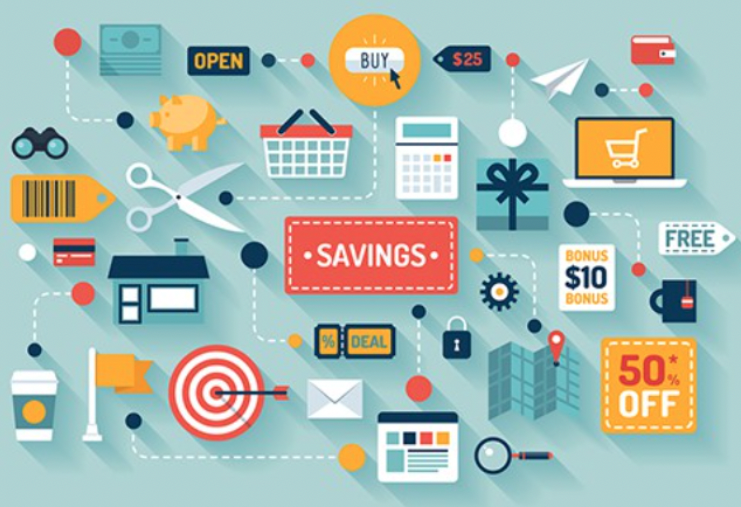Preparing Students to be Financially Literate
Key Points
-
Financial Literacy is recognized during the month of April.
-
It is important for educators to provide learning opportunities for students of all grade levels to develop these essential financial skills.

Financial Literacy is recognized during the month of April and it is important for educators to provide learning opportunities for students of all grade levels to develop these essential financial skills. The National Endowment for Financial Education originally started this as a one-day event held in April, however, it later transitioned to an entire month-long recognition. Jump$tart Coalition is a non-profit organization that took over planning the annual event as a way to raise awareness about financial literacy and promote financial education.
We are already learning about new forms of payment and making transactions in the digital world and if we continue to see new trends and technologies, we will need to keep learning about how to best prepare our students. As we continue to hear about the metaverse and with individuals and organizations making and selling NFTs, talking about cryptocurrency, or instantly exchanging money by paying with different apps, there are additional topics related to financial education and preparedness that we need to provide for our students.
Years ago with the arrival of credit cards, which led to personal debt for many, and writing checks often led to bounced checks due to insufficient funds, these two examples alone show the importance of being financially literate. Learning how to manage finances, set a budget, and keep accurate financial records are just some of the tasks a part of our everyday lives. The financial system of today is quite different than even a few years ago and we will continue to see changes in how we deal with all things related to finance whether personal or business. Therefore, it is vital that all students receive instruction and guidance and are able to access learning opportunities that will best provide them with a greater understanding of personal finances and how the financial world works.
Teaching financial literacy
In the United States, for the most part, states do not require personal finance courses for high school graduation. Currently, 23 states require high school students to take a course. As of 2021, there were 25 states that introduced legislation to have finance courses included as required in the high school curriculum. Florida recently became the largest state to require personal finance in high school. As we prepare our students, teaching about financial literacy is something that needs to happen earlier than at the high school level. There are traditional methods we can use as well as relying on resources provided by organizations or edtech companies that provide materials that are relevant for students in elementary school through higher education.
In the United States, for the most part, states do not require personal finance courses for high school graduation.
Rachelle Dené Poth
In order to be prepared for the future, students need to fully understand how much financial literacy plays a role in our everyday lives. Some basic knowledge such as understanding how to make purchases, keeping track of personal funds and setting and living on a budget are essential. Students also need to know what it takes to apply for a loan, file taxes, purchase a home, possibly start a business and plan for retirement.
What do courses look like?
I teach in a smaller school and there has been a personal finance course offered as an elective since the 2009-2010 school year. Seeing the great need for students to have skills in this area, eight years ago it became a graduation requirement. One course that provides many wonderful opportunities for students is “Entrepreneurship and Business Management.” Mrs. Patsy Kvortek, one of our business teachers, created that course because she saw a need for students to develop skills in areas such as project management, event planning, and securing funding, especially in light of what is now the gig economy. In our personal finance course, topics include goal setting, banking services, budgeting, decisions regarding housing and loan applications, understanding property and income taxes, obtaining life, health and auto insurances, investment essentials, and career planning in addition to many other topics..
As not all schools may have access to courses like this or may lack adequate staffing for these courses, it is essential to have a variety of resources available that can be used in all grade levels and which enable educators to bring financial literacy learning opportunities to every classroom.
There is no shortage of resources available online whether a website with activities or informative brochures, using some of the financial literacy board games like the game Life or Monopoly, which can be useful for learning about spending and managing money and making financial decisions. Educators at any grade level or content area can have students work together to design a product or create a solution to a problem, which can promote the development of an entrepreneurial mindset and build financial literacy skills. For these types of projects, students will need to analyze information, secure funding, plan a budget for their expenses and many more authentic and real-world tasks, while connecting it to the content they are learning.
Another idea is to consider doing project-based learning (PBL) and cross-curricular collaborations. For example, present students with a problem that has some challenges. Then have students create a product, start a business and develop a financial plan and work together. Beyond building skills in financial literacy, they will also develop SEL skills as they work through challenges (self-management), set goals (self-awareness), make decisions, and learn about issues or challenges faced in the world (social awareness).
Educators have access to many resources, some which are available for free, that make it easier to create valuable lessons related to financial literacy for students. For families, there are also a variety of resources to use at home. Some sites even offer a bunch of free activities for students to learn more.
Getting started
Many digital tools such as Nearpod offer ready-made lessons on topics related to financial literacy and game-based learning tools such as Kahoot! and Quizizz have some activities, whether games or lessons in their library to choose from to use for a quick assessment or fun activity. Financial literacy when searched brings up many results and even searching by specific focus like budgeting, loans, and many more.
The following resources include a variety of materials ranging from infographics, lesson plans, and games for students. There are many topics including how to create a bank account, set and manage a budget, apply for or refinance a loan, make investments and many other relevant topics.
1. Banzai is a resource that I recently found. This interactive platform offers a variety of ways for students to learn how to manage their money, test their decision-making skills, and analyze spending. Banzai will also send free printed workbooks to schools for classroom use and these workbooks align with each financial literacy course. There are real-life scenarios presented such as tracking and reporting revenue, applying for personal loans, knowing how to pay off debts and more relevant scenarios. You can also find articles on a variety of topics.
2. Copper offers a variety of resources for teens to learn about financial literacy. Copper has a financial literacy quiz that can be taken by parents or teens, detailed explanations on topics including banking, earning and saving money, and information for parents.
3. EverFi has free, self-paced courses on financial literacy available for students at the elementary, middle or high school level. For elementary school students, the course is focused on the basics of finances while middle school students learn how to start a business, create a business plan and how to balance a budget. At the high school level, students learn how to apply for loans, invest money, manage a budget and considerations for long-term financial planning.
4. FDIC Money Smart is a free financial education program with resources such as infographics and activities including 14 different games for educators and students. Topics include borrowing, earning, protecting and saving money. One good experience is working through the “How Money Smart Are You?” activity available for different grade bands. FDIC Money Smart also has resources to explore starting a business and learning activities for adult learners.
5. IRS Tax Simulations is a site where students can work through simulations based on 20 different people. Each simulation is focused on completing a task related to the filing of taxes and based on the bio information presented in each simulation.
6. Practical Money Skills is a website for students and parents to access resources for learning some finance basics. It includes lesson plans and videos for students in grades pre-K through high school, college and for special needs. Topics include budgeting, managing debt, dealing with identity theft, setting up a savings account and more.
7. The Uber Game is a great interactive experience for trying out being an Uber driver and having to meet financial goals and make decisions related to the work. There are two levels to play at and at the end, the driver learns what wage they earned, their rating and if they have enough to pay for their expenses.
Students need the knowledge and the skills to be able to make financial decisions, manage their money, and plan for their future. Financial literacy is an essential skill for everyone and with access to the right learning opportunities, we can best prepare them and ourselves for the future.





0 Comments
Leave a Comment
Your email address will not be published. All fields are required.